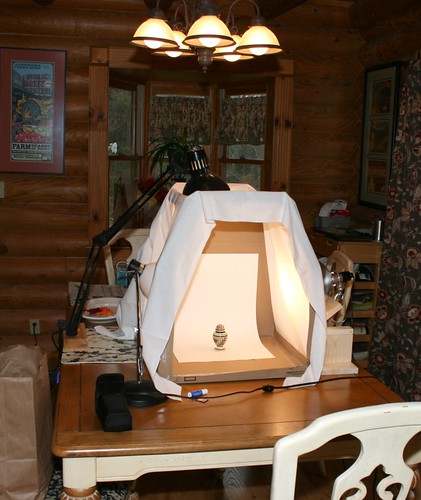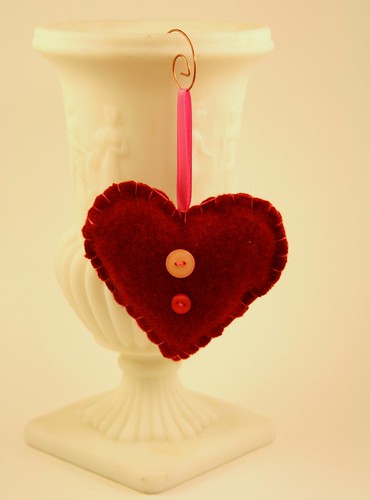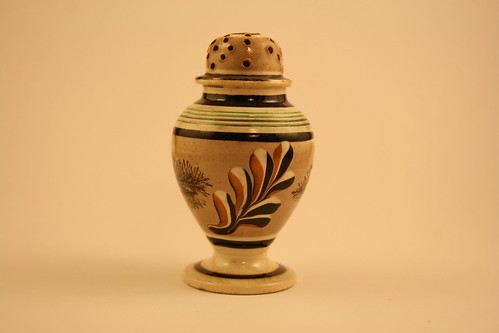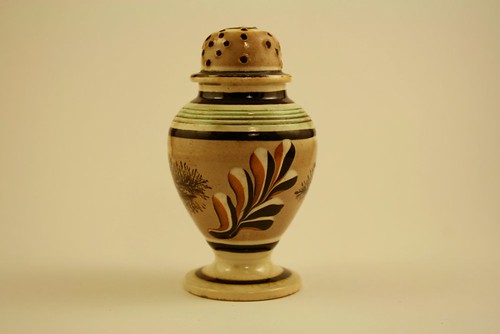I prefer taking photos outside in natural light, but at this time of the year it's very hard to get a good shot because 1) it's always dark, 2) it's often windy with some form of precipitation, or 3) it's dark, windy, and either raining or sleeting. On the rare occasion that it's not dark and not windy, and some form of water isn't coming down from the sky, the sun will be so low on the horizon that the light is harsh, the shadows are too stark, and all my pictures look like crap.
So what do you do when you need to take good photographs of something you want to sell online, but you don't have any natural light to work with? Use a light box.
Steve built me a light box out of a cardboard box for Christmas. There are many tutorials on how to do this on the web, just search for "DIY light box" and you'll find them. Essentially a light box is a box with windows covered by thin white material or tissue paper. There are lights outside the box shining light into the middle of the box, which is where you place the object you want to photograph. The light is filtered through the material or paper to eliminate harsh shadows. A sheet of curved white posterboard provides the background inside the box and also produces a pretty cool effect known as the "infinite sweep" or "infinite horizon" in your photos.
So what does a light box look like? Here's my light box set up on the dining room table. The overhead light provides some illumination, but the desk and work lights set up around the box are what really makes it work.

No, it doesn't look like much, but look at what it can do:

Florescent lights will give a yellowish cast to the light. Here is an original, untouched photo.

However, you can clean up most of that using a photo processing package.

Be judicious about correcting colors in your pictures. I removed the yellow cast in the above photo, but I was careful not to overcorrect the colors. Colors can vary from monitor to monitor, but your photo should always be faithful to your actual article. You don't want your customer to get upset because the item she received from you doesn't resemble the picture you posted!
Or you can also avoid that yellowish cast by adjusting the white balance on the camera before taking your pictures. I haven't played around with my white balance yet, but it's on my to-do list now.
FYI, I started using a digital camera in 2007. A year later I began using Flickr to upload and store my photos. I use the associated photo editing package Picnik to do at least some nominal clean up. I've taken a couple of seminars on photography through Virginia Tech, but much of what I know about digital photography has come through trial and error. I do not claim to be a professional photographer and there is much I'm still learning about photography.
And that funny little piece of pottery seen in the pictures above? That's a mochaware pepperpot or caster, the 1800s version of a pepper shaker. I found it at a tag sale back in the mid 1990s in Tidewater, VA. I don't know anything about its provenance other than the sale was held by a well respected auctioneer who had been in the business for years. He had wonderful tag sales every so often, presumably to move merchandise that didn't sell at auction. The auctioneer would let you put your finds together in a box and then charge you by the box lot after he gave it a once over. Sometimes he'd pull everything out to see what you had, and other times he'd barely give it a glance. I remember this particular box was full of assorted kitchenware, some Texas ware, vintage pottery, and this pepperpot wrapped up in some vintage tablecloths. The auctioneer gave the box a glance and waved it away. We paid $20.00 for the box, so that was probably only about $2.00 or $3.00 for the pepperpot.
I'm pretty sure this auctioneer would have recognized the value of this piece, so I don't think he realized it was in the tag sale. I've seen similar pieces on line described as English ware from the early to mid 1800s. This particular piece has a baluster form with engine turning on the shoulders and has both dendritic and slip applied decorations. Online these pieces are priced anywhere from several hundred dollars to $600-800 dollars. Christie's has auctioned them for several thousand dollars. Needless to say, that was a great tag sale!
For more information about mochaware, I recommend Colonial Sense's page on mochaware.
(Oh look! They used a light box for many of those photos, too!)
For more information about mochaware, I recommend Colonial Sense's page on mochaware.
(Oh look! They used a light box for many of those photos, too!)
Beautiful pepper pot and a beautifully written piece on lightboxes.
ReplyDelete